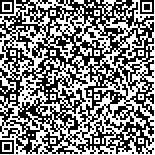| 引用本文: | 姚娜,汪静,李雪银,陈桂生,黄燕明,吴振斌,贺煜东,康志英.女贞子标准汤剂含量转移率异常原因分析[J].中国现代应用药学,2019,36(20):2522-2526. |
| YAO Na,WANG Jing,LI Xueyin,CHEN Guisheng,HUANG Yanming,WU Zhenbin,HE Yudong,KANG Zhiying.Analysis on the Reason of the Abnormal Content Transfer Rate in Standard Decoction of Ligustri Lucidi Fructus[J].Chin J Mod Appl Pharm(中国现代应用药学),2019,36(20):2522-2526. |
|
| |
|
|
| 本文已被:浏览 2415次 下载 1094次 |

码上扫一扫! |
|
|
| 女贞子标准汤剂含量转移率异常原因分析 |
|
姚娜1,2,3,4, 汪静1, 李雪银1, 陈桂生1, 黄燕明1, 吴振斌4, 贺煜东5,6, 康志英1
|
|
1.广州市香雪制药股份有限公司, 广州 510663;2.广东省天然产物标准物质分离企业重点实验室, 广州 510663;3.广东省中药香雪工程技术研究中心, 广州 510663;4.宁夏隆德县六盘山中药资源开发有限公司, 宁夏 固原 756300;5.中山大学生命科学学院, 广州 510275;6.暨南大学生命科学技术学院, 广州 510632
|
|
| 摘要: |
| 目的 探讨分析11批次女贞子标准汤剂中特女贞苷含量转移率异常的原因。方法 通过肉眼观察和显微鉴别比较不同产地、不同批次女贞子在性状和显微鉴别中的差异,采用高效液相色谱法对11批次女贞子粉末和11批次女贞子壳的指纹图谱进行比对,并比较同批次女贞子的壳和粉末中指纹图谱情况。结果 不同产地、不同批次的女贞子的外观形状存在差异,在显微鉴别上均与药典描述一致;11批女贞子粉末和11批壳指纹图谱与对照指纹图谱的相似度均>0.88;同批次女贞子壳中特女贞苷含量是粉末的1.15~3.5倍。结论 女贞子壳和粉末中特女贞苷含量差异大,在进行标准汤剂研究中因捣碎破壁程度不一,因而导致标准汤剂中特女贞苷含量转移率异常。建议在生产中对壳和粉末比例或对捣碎程度进行规定,以保证批间含量稳定。 |
| 关键词: 女贞子 标准汤剂 含量转移率 异常分析 |
| DOI:10.13748/j.cnki.issn1007-7693.2019.20.006 |
| 分类号:R917.101 |
| 基金项目:宁夏回族自治区重点研发计划项目(2017BY079) |
|
| Analysis on the Reason of the Abnormal Content Transfer Rate in Standard Decoction of Ligustri Lucidi Fructus |
|
YAO Na1,2,3,4, WANG Jing1, LI Xueyin1, CHEN Guisheng1, HUANG Yanming1, WU Zhenbin4, HE Yudong5,6, KANG Zhiying1
|
|
1.Guangzhou Xiangxue Pharmaceutical Co., Ltd., Guangzhou 510663, China;2.Key Laboratory of Standard Material in Natural Medicine of Guangdong Province, Guangzhou 510663, China;3.Xiangxue Engineering Research Center for Chinese Medicine of Guangdong Province, Guangzhou 510663, China;4.Longde LiuPanShan Chinese Medicine Resources Development Co., Ltd., Guyuan 756300, China;5.School of Life Science, Sun Yat-sen University, Guangzhou 510275, China;6.College of Life Science and Technology, Jinan University, Guangzhou 510632, China
|
| Abstract: |
| OBJECTIVE To analysis the reason of the abnormal content transfer rate in standard decoction of Ligustri Lucidi Fructus. METHODS Through visual observation and microscopic identification, the differences between different producing areas and different batches of Ligustri Lucidi Fructus in character and microscopic identification were compared. HPLC was used to compare the fingerprints of 11 batches of powder of Ligustri Lucidi Fructus and 11 batches shell of Ligustri Lucidi Fructus. At the same time, the fingerprints of shell and powder of the same batch of Ligustri Lucidi Fructus were compared. RESULTS There were differences in the appearance and shape of different batches of Ligustri Lucidi Fructus from different producing areas. It was consistent with pharmacopoeia description in microscopic identification. The similarity between 11 batches of Ligustri Lucidi Fructus powder and 11 batches of shell fingerprint was >0.88. The content of specnuezhenide in the shell was 1.15 to 3.5 times that of the powder in the same batch. CONCLUSION There is a significant difference in the content of specnuezhenide in the shell and powder of Ligustri Lucidi Fructus. The degree of wall breaking is different in the study of standard decoction. Therefore, the transfer rate of content of specnuezhenide in standard decoction is abnormal. It is suggested that the ratio of shell to powder or the degree of tamping should be regulated in the production to ensure the stability of inter-batch content. |
| Key words: Ligustri Lucidi Fructus standard decoction transfer rate of content abnormal analysis |
|
|
|
|
